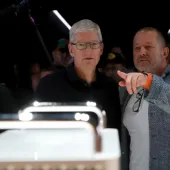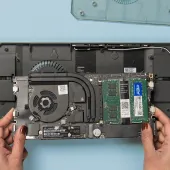NASA and Axiom Space Unveil New Spacesuit for Moon Missions
NASA and Axiom Space have unveiled the latest version of the spacesuit that will be worn by astronauts on the surface of the moon during the Artemis III mission. The AxEMU, or Axiom Exploration Extravehicular Mobility Unit, is an improved version of the classic EVA suits used during the Apollo era, and it is designed to make movements on the lunar surface much easier. This near-final version of the xEMU suit has been developed over the last few years with the help of NASA, who provided specifications and prototypes, before contracting with Axiom Space to build the final version.
The xEMU suit was first publicly discussed in late 2019, and a working version was quickly developed for refinement and production. Axiom Space was chosen as the partner for this project, and over the last couple of years, the company has made some adjustments to create the final version that was revealed recently. The AxEMU will be white in color during use on Artemis III, scheduled for 2025, to reflect the strong sunlight on the lunar surface. However, during the unveiling, it was black for no apparent reason other than it looked cooler and showed off the Axiom logo better.
The AxEMU is designed to be worn during extended hard vacuum and hazardous environments, but astronauts will not wear it all the time. Another suit is available for in-vehicle work that can be quickly sealed in case of depressurization. The materials and engineering of the AxEMU have come a long way since the Apollo era, and the new suits are lighter, safer, and more comfortable.
The division of labor for the AxEMU project is clear, with Axiom Space responsible for the design, development, qualification, certification, and production of the flight training spacesuits and support equipment, including tools, to enable the Artemis III mission. Axiom Space will also test the suit in a spacelike environment before the mission. On the other hand, NASA maintains the authority for astronaut training, mission planning, and approval of the service systems.
Collins Aerospace is another company that is working on an improved EVA suit for use on the ISS and future space stations. With different use cases, dividing and conquering makes sense. Boeing and SpaceX also have their own escape suits and other equipment for astronauts to wear during spaceflights, but they must be returned after the flight. Thus, even the most experienced astronaut won't be able to build up a closet full of these suits.



